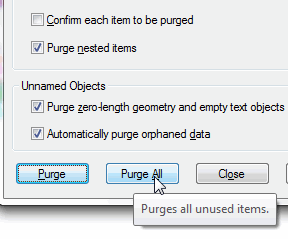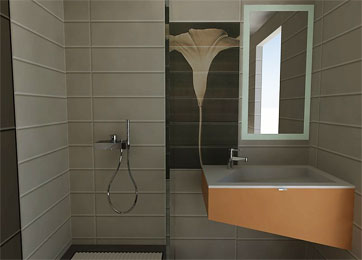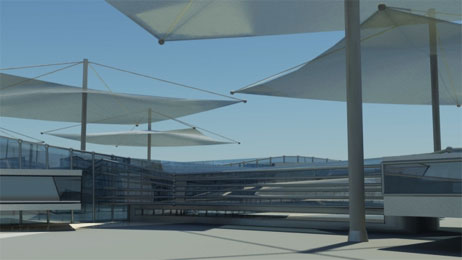Learn AutoCAD with our Free Tutorials
Welcome to CADTutor
CADTutor provides the best free tutorials and articles for AutoCAD, 3ds Max and associated applications along with a friendly community forum. If you need to learn AutoCAD, or you want to be more productive, you're in the right place. See our tip of the day to start learning right now!
Free Tutorials and More…
The Tutorials section provides over 100 original tutorials for AutoCAD, 3ds Max and other design applications. Michael’s Corner is an archive of productivity articles that brings you the best AutoCAD tips and tricks. Our Forum is a lively community where AutoCAD users can ask questions and get answers. The Downloads area provides free AutoCAD blocks, free AutoLISP routines and free images.
Tutorials of the Moment
Recently viewed tutorials
-
Dimensioning

This tutorial describes the options and commands available for dimensioning drawings and how to use them. The correct use of AutoCADs dimension tools is the key to producing clear and concise measured drawings. Format: Text/Image
Last visited: 1 minute ago
-
Importing AutoCAD Meshes to Bryce

This tutorial describes how to create a triangular ground model using Key Terra-Firma and AutoCAD and how to import this ground model into Bryce. Format: Text/Image
Last visited: 3 minutes ago
-
Object Snap

A tutorial giving an overview of all the AutoCAD object snaps (osnaps) with some worked examples. The tutorial also covers the use of temporary tracking points and object snap tracking. Format: Text/Image
Last visited: 3 minutes ago
-
Entering Survey Data using AutoCAD

These techniques apply to basic CAD programs such as AutoCAD, IntelliCAD, etc. If you have a civil/survey program or add-on, such as Land Desktop, SurvCADD, Eagle Point, etc., then there are built-in tools for entering lines and curves. Format: Text/Image
Last visited: 3 minutes ago
-
Units and Scales

If you're asking yourself "what scale do I draw in?" or "what units should I use?", you need this tutorial. Format: Text/Image
Last visited: 4 minutes ago
-
AutoLISP Quick Start

This tutorial is designed to help AutoCAD users get to grips with AutoLISP quickly. It demonstartes how to create AutoLISP routines from a standing start. Format: Text/Image
Last visited: 6 minutes ago
CADTutor Tutorials
Our tutorials are comprehensive but straightforward introductions to AutoCAD and related software. They are designed to help beginners get to grips with design workflows as quickly as possible. There are over 100 to choose from, some text/image based and others in video format. Whatever stage you are at in your learning, you should find a tutorial to help.
Forum Latest
Currently Active Topics
Cursor color
by CharlieDFW
3 replies
Last post: 3 hours ago
XREF PATH - COPY TO CLIPBOARD
by james9710
1 reply
Last post: 5 hours ago
Revit -> PDF -> Autocad
by ILoveMadoka
0 replies
Last post: 8 hours ago
Change MText Width (after width has been changed))
by ILoveMadoka
4 replies
Last post: 13 hours ago
Need help reducing multiple oversized dimension text boxes at once
by 0misclose
12 replies
Last post: 17 hours ago
Hybrid parallel
by PGia
125 replies
Last post: 27 hours ago
This Week's Hot Topics
Create a stable true rectangle
by Nikon
12 replies
Viewed: 346 times
Import multipage PDF as AutoCAD Objects
by SLW210
6 replies
Viewed: 379 times
Can I read and copy Dynamic Block properties to another block reference?
by p7q
5 replies
Viewed: 245 times
Detect Circular Xref in AutoLISP
by Ahankhah
4 replies
Viewed: 200 times
Change MText Width (after width has been changed))
by ILoveMadoka
4 replies
Viewed: 180 times
problem with initget1
by shokoufeh
4 replies
Viewed: 137 times
CADTutor Forums
Our forum is a vibrant community of experts and beginners. The main focus is helping beginners get to grips with AutoCAD and to help more advanced users become more productive. The AutoLISP forum is one of the busiest out there, providing expert advice for busy professionals.
AutoCAD Productivity
Possible Solutions to the Disappearing Drawing
From: AutoCAD Productivity Articles #142
Originally published: October 2015
 Many of my customers encounter a situation where the drawing disappears when they change the view or use Zoom Extents. Here are a few of my suggestions that I'm beginning to include in all my training sessions:
Many of my customers encounter a situation where the drawing disappears when they change the view or use Zoom Extents. Here are a few of my suggestions that I'm beginning to include in all my training sessions:
Purge and Audit a drawing you inherit or haven't worked on in a while. In the Purge command, if the two boxes under Unnamed Objects are ‘live’, check them both.
Save the current layer condition as a layer state, then turn On and Thaw all layers. Objects that are on layers that are Off are still ‘seen’ when you Zoom Extents. Saving the layer state will give a fallback position, just in case.
Set the QTEXT (Quick Text) feature to ON, then Regen the drawing. Turning on Qtext will replace all text objects with boxes and may make the dots around the perimeter of the screen easier to see. This feature was used extensively in the early days of pen plotters when it just took too long — albeit very entertaining over a lunch hour — to plot drawings with a lot of text. Instead of pppllloootttiiinnnggg out each letter, it just drew a quick 4-sided bounding box around the text. (Set QTEXT back to OFF when you're finished.)
Set PDMODE to 35 to display Points in the Circle-X format. All my furniture/facilities customers have drawings with Point objects on the insertion points and other vital locations on their furniture. Setting the PDMODE — Point Display Mode — to 35 makes any floating Point object visible. (Set PDMODE back to 0 to go back to the default condition of dots.)
After all's said and done, hopefully you will see the misbehaving object that's keeping your drawing from displaying as you expected. At that point, you can either move those objects back among their peers… or simply delete 'em. That's your call, but at least now you know what that problem was!
See all the articles published in October 2015
Michael's Corner
Between 2003 and 2016, Michael Beall (and one or two guests) wrote almost 600 articles for CADTutor. The focus of these articles is AutoCAD productivity, and although some of them are now more than a few years old, most remain relevant to current versions of AutoCAD. The article above is just one example. Check out Michael's Corner for a full listing.
Image of the Week
-
8th – 14th December 2025

This week's image is by Dorian
Software used: AutoCAD 2008
-
Last Week's Image

Last week's image is by mehiar
Software used: 3ds Max
-
Two Weeks Ago

This image is by Titi95
Software used: AutoCAD 2014
-
Three Weeks Ago

This image is by Titi95
Software used: AutoCAD 2015 and Keyshot
Gallery of Work
Over the years, our forum members have contributed hundreds of images, showcasing their amazing work. The images above are just a small selection that demonstrate the wide range of project types our community is involved with. Take a look at our gallery to see all the images published in the last 12 months.
Tip of the Day
Selecting multiple grips
 Did you know that you can move more than one grip at a time? Select an object to display the grips. Hold down the Shift key and select as many grips as you wish. Release the Shift key, click again on any one of the highlighted grips and then click it's new position. All the selected grips will follow.
Did you know that you can move more than one grip at a time? Select an object to display the grips. Hold down the Shift key and select as many grips as you wish. Release the Shift key, click again on any one of the highlighted grips and then click it's new position. All the selected grips will follow.
Missed a Tip?
Did you miss yesterday's tip? Maybe you forgot to drop by or maybe you don't visit over the weekend. If so, you can now see all the tips published during the past week. Also, if you have a tip you'd like to share with us, you can post it on our forum and if we like it, we'll publish it here.